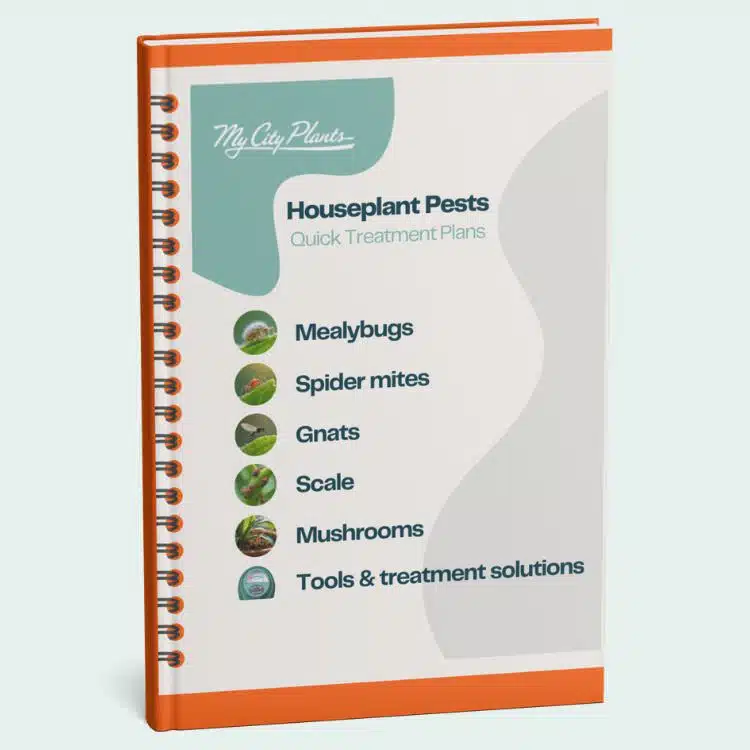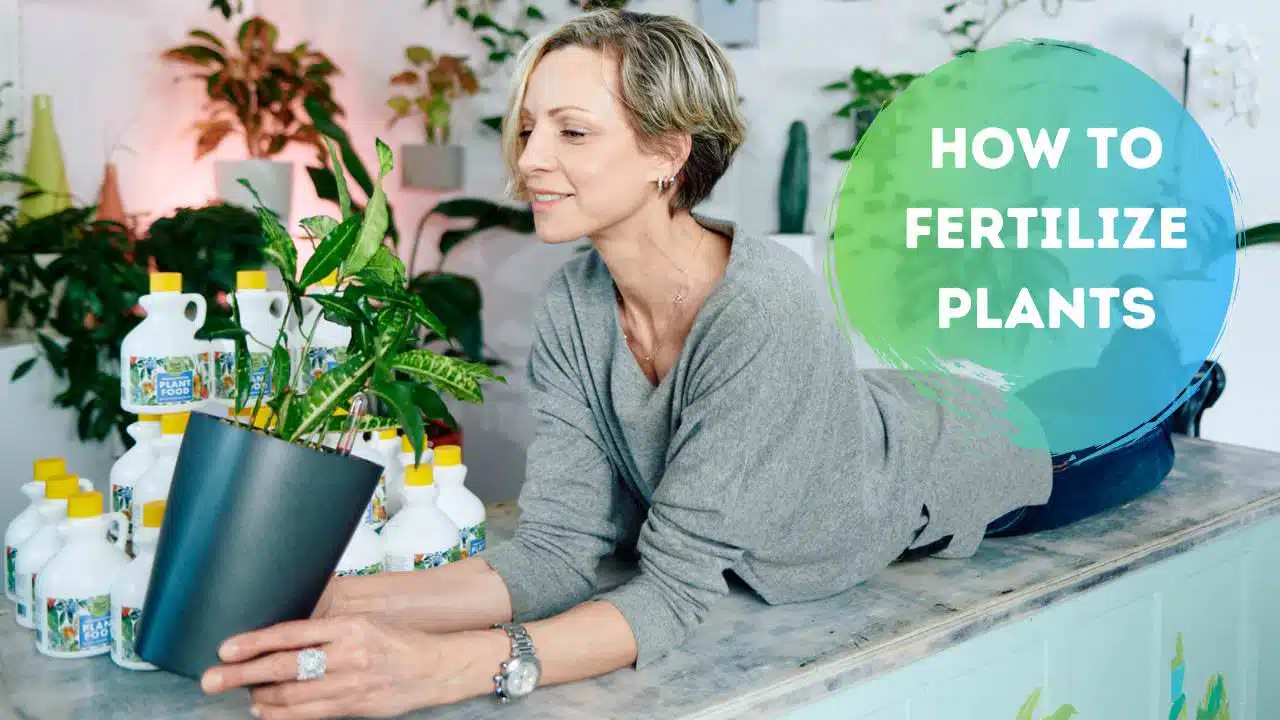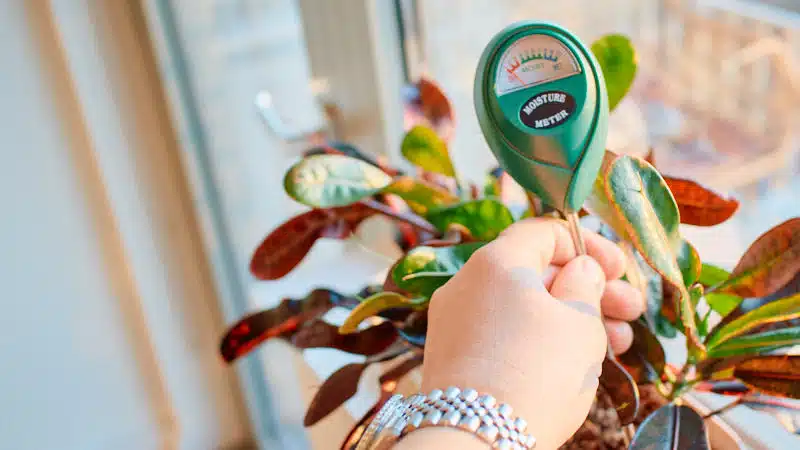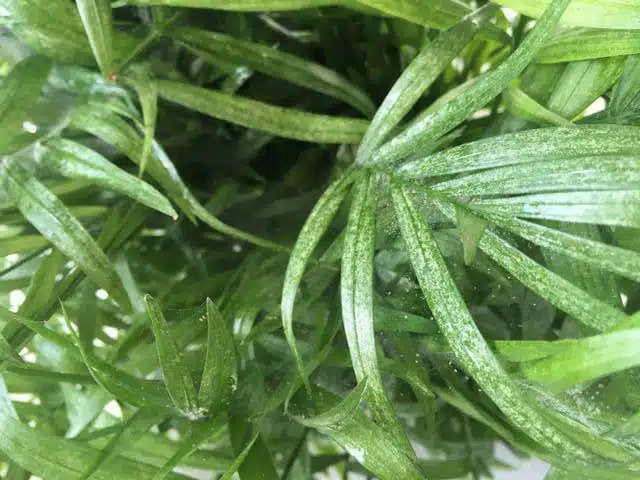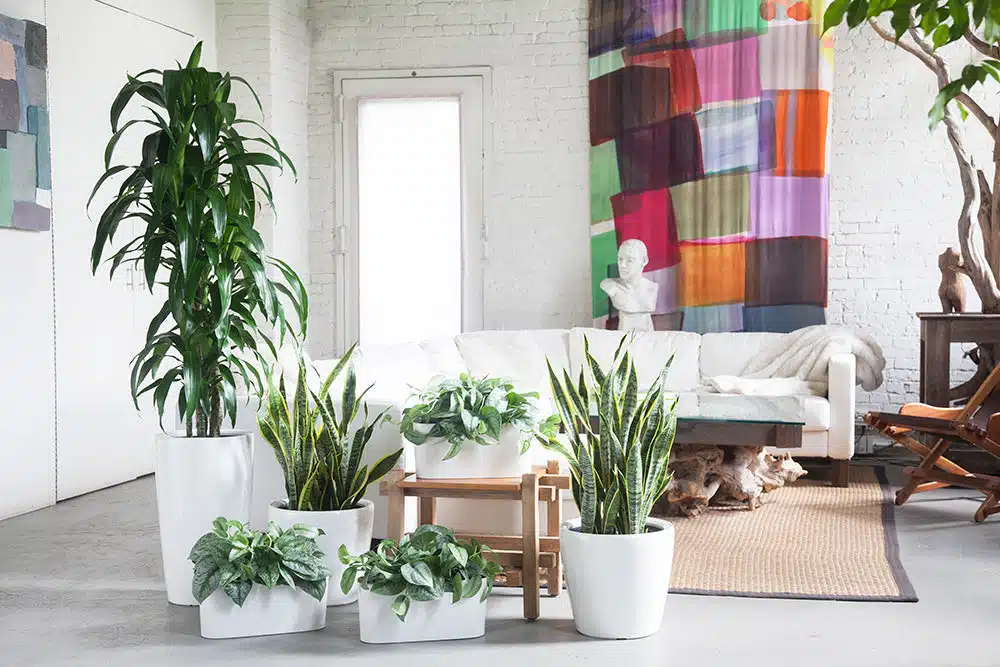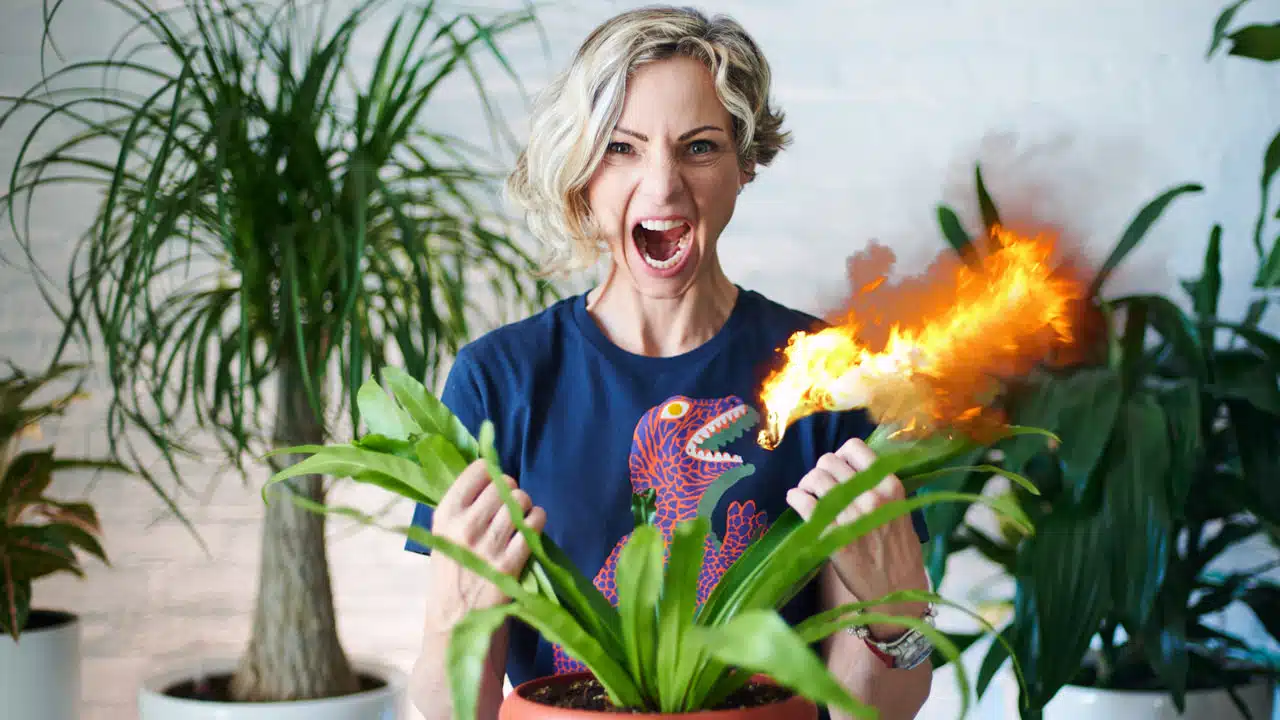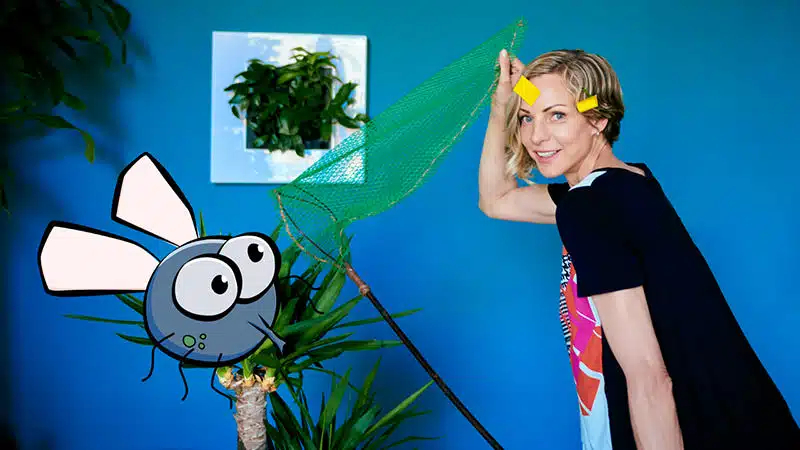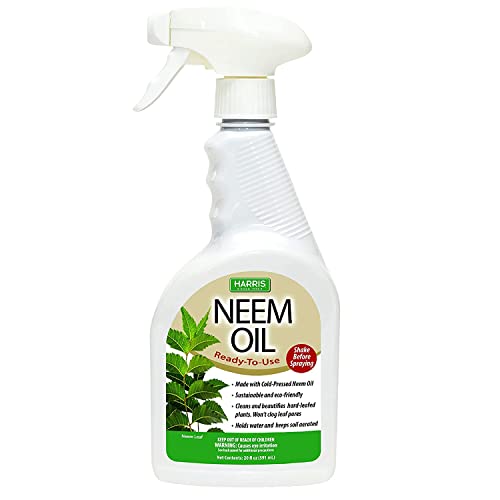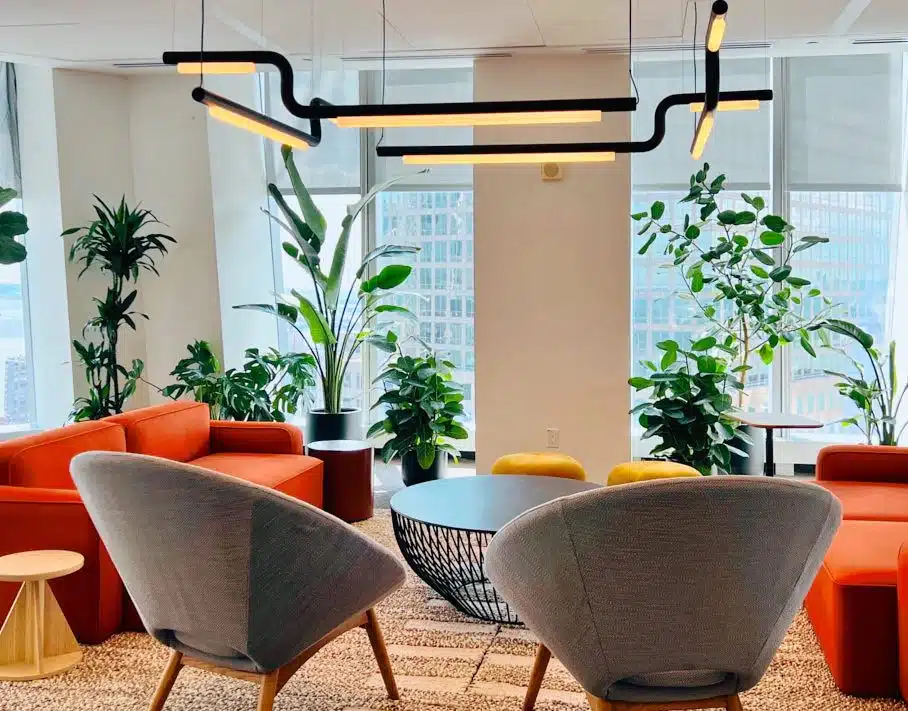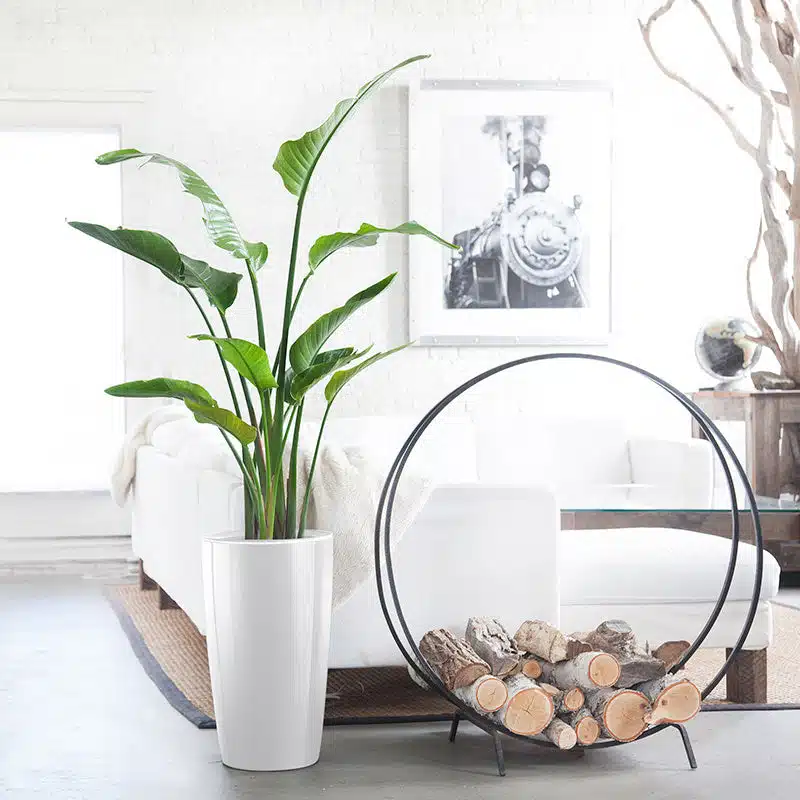Is your green thumb feeling a bit yellow? Don’t worry if your houseplants are looking less than vibrant. I’ve got you covered with three ways to learn why those leaves are changing color:
1. 🎥 Watch and Learn
Visual detective? My in-depth video breaks down the 6 main culprits behind yellowing or browning leaves. Watch as I show you how to recognize and identify each issue, so you can diagnose your plant’s distress signals like a pro.
2. 🎧 Listen While You Tend
Not a fan of videos? No problem! Tune in to our leaf-loving Green Podcast episode, where our friendly robo-hosts 🤖 (their chlorophyll processors are still calibrating, so bear with us!) discuss the colorful mystery of yellowing leaves. It’s like a plant detective audiobook for your ears! 👂
3. 📖 Read and Reference
Prefer to leaf through the details at your own pace? Scroll down for my comprehensive written guide. I’ll walk you through each of the 6 reasons, providing clear explanations and easy-to-follow solutions to get your plants back to their green glory.
Choose your preferred format, and let’s turn those plant frowns upside down! 🌿😊
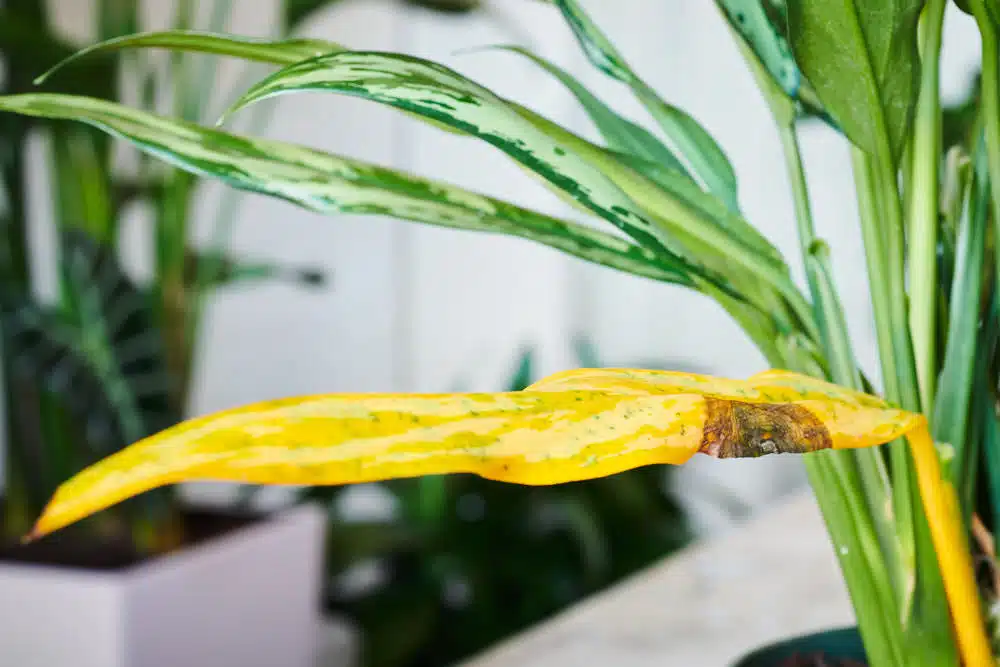
Here is some helpful information about why leaves are turning yellow or brown. This can happen for a few reasons.
1. Acclimation
Plants are living things, and all go through an acclimation period after being removed from the greenhouse, repotted, and delivered to their final destination. Some plants can be dramatic while adapting to the new home and environment.
Some plants are more sensitive to seasonal changes, and indoor temperature changes and can be very dramatic while adapting to a new environment.
Death of lower leaves, droopiness, yellowing, and browning of leaves can be expected.
More than likely, your new houseplant will bounce back in a few weeks and will start to look healthier once adjusted.
2. Watering issue
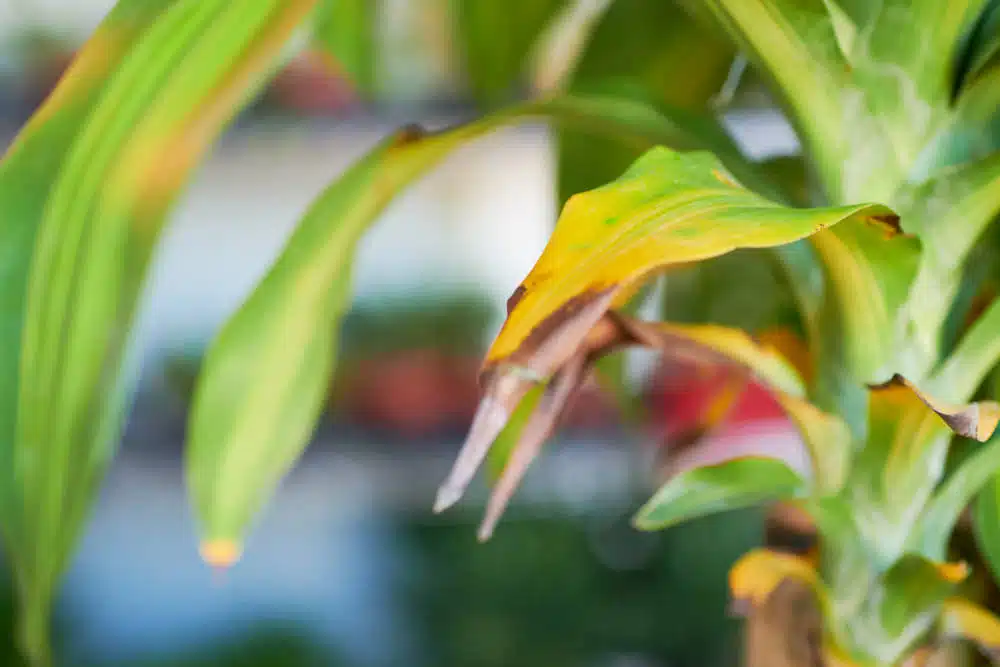
The most common reason for leaves turning yellow or brown is improper watering—either too much or too little. To avoid these issues, it’s essential to allow enough time for the soil to dry between waterings. Learning how to save an overwatered plant is key to keeping your plants healthy, especially when signs like yellowing leaves appear. If you find that the soil is too dry and it’s been a while since you’ve watered, it’s time to give your plant a good drink.
Make sure to test the soil at least once every two weeks to void under or overwatering.
Watch our short video here about how to water plants potted in Lechuza planters to understand the watering process better.
3. Natural process
Some older leaves might turn yellow and shed. Usually, it happens to the lower leaves.
4. Nutrient deficiency
If you have had your plant for more than one year and have not used any plant food, your plant might be struggling with a lack of nutrients. We offer amazing plant food full of nutrients and very gentle on the plant’s roots.
5. Lack of light or air circulation
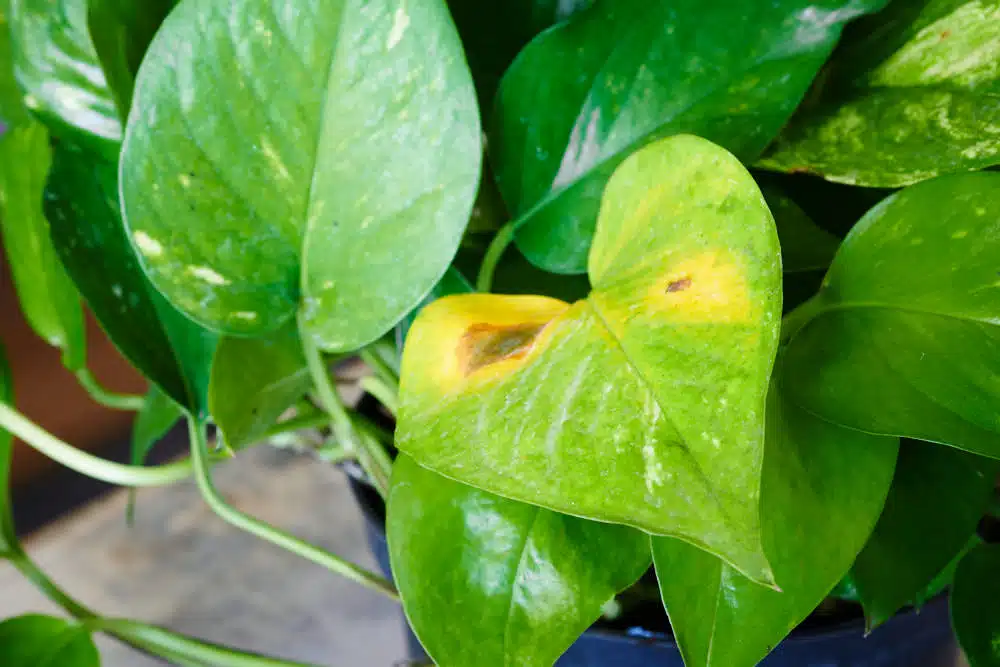
If your space has a very low light situation or the plant you have selected is not the right type for the low light environment, this can be the reason why the plant looks sad.
Air circulation is another very important element for the plant’s well-being.
If the plant is pushed against the wall, squeezed in the corner, or between furniture, if the indoor fan (AC/Heat) is off and all windows and doors are shut, the plant will suffocate. It is best to move the plant to a more spacious spot, rotate it regularly, and keep a fan running.
6. Exposure to wrong temperatures
If your plant is placed too close to any heat source, AC, or cold drafts, exposure to extreme temperatures will affect the plant. Optimal temperature varies somewhat among different houseplants. However, the most preferred range is between 69F and 80F.
Keep your plants clean by removing all affected leaves and keep the soil free of any debris.
We hope with the information above you can create a better environment for your green friends and understand them better!
Why are the leaves on my plant turning yellow?
Yellowing leaves can be caused by various factors, including overwatering, underwatering, nutrient deficiencies, lack of light, or even pests. It’s essential to closely examine your plants, and analyze your watering routine, light conditions, and the overall environment to determine the exact cause.
What should I do if my plant’s leaves are turning yellow after repotting?
Some yellowing of leaves after repotting is normal due to the plant going through some level of shock. Ensure the plant is watered properly and remove any yellow leaves. The plant should stabilize over time.
How can I prevent yellow leaves caused by nutrient deficiencies?
Regular fertilization during the growing season (Spring-Summer) can help prevent yellowing due to nutrient deficiencies. Make sure you are providing the right nutrients for your specific plant type.
Should I remove yellow leaves from my plant?
Yes, it’s best to remove yellow or dying leaves. This helps the plant focus its energy on new growth and keeps it looking aesthetically pleasing.
Can too much sun cause leaves to turn yellow?
Yes, leaves can turn yellow due to heat stress or too much direct sunlight. Most plants prefer bright, indirect light. Prolonged exposure to intense sun can lead to leaf burn and yellowing.
How do I save my plant if it’s turning yellow after a pest infestation?
Yellowing after pest treatment can be due to the treatment itself or residual pest damage. Best to remove all affected leaves.
What can I do if my plant has yellowing leaves and is not growing well after repotting?
Ensure the plant is in a pot with proper drainage and avoid overwatering. Leaf yellowing and growth stagnation are very common for some plants after repotting. Additionally, check if the potting mix is appropriate for the plant and that the plant is receiving the right amount of light. If necessary, adjust its conditions to help the plant recover.
Is it normal for newly propagated plants to have yellow leaves?
Yellowing in newly propagated plants can occur due to root stress from changes in the environment. Ensure the plant is receiving the right light and moisture, and it should recover as it acclimates.
How do I deal with yellow leaves on plants grown in water without soil?
If a plant grown in water develops yellow leaves, it may be due to stagnant water or too much sunlight. Change the water regularly (at least once a week) and ensure the plant is not exposed to direct sunlight for extended periods.
What should I do if my plant turns yellow after pruning the roots?
Yellowing after root pruning can be a temporary shock. Ensure the plant is not overwatered and give it time to stabilize.
